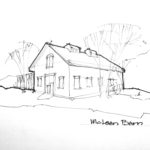
By Elizabeth Harmer Dionne Belmont’s Community Preservation Committee (CPC) has recommended the following projects to Town Meeting for Community Preservation Act (CPA) funding in FY2022. Phase I Consulting Services for Payson Park Renovation Organization: Friends of Payson Park (Linda Oates, Susanne Croy, Jay Marcotte) CPA Category: Recreation Amount requested: $35,000 This is the first step in renovating Payson Park, which suffers from inadequate access, crumbling infrastructure, and haphazard layout. Phase I involves an assessment of existing site conditions, neighborhood consultation and feedback, a conceptual design, and a proposed budget for construction costs. Due to changes implemented by the CPC in [READ MORE]

















